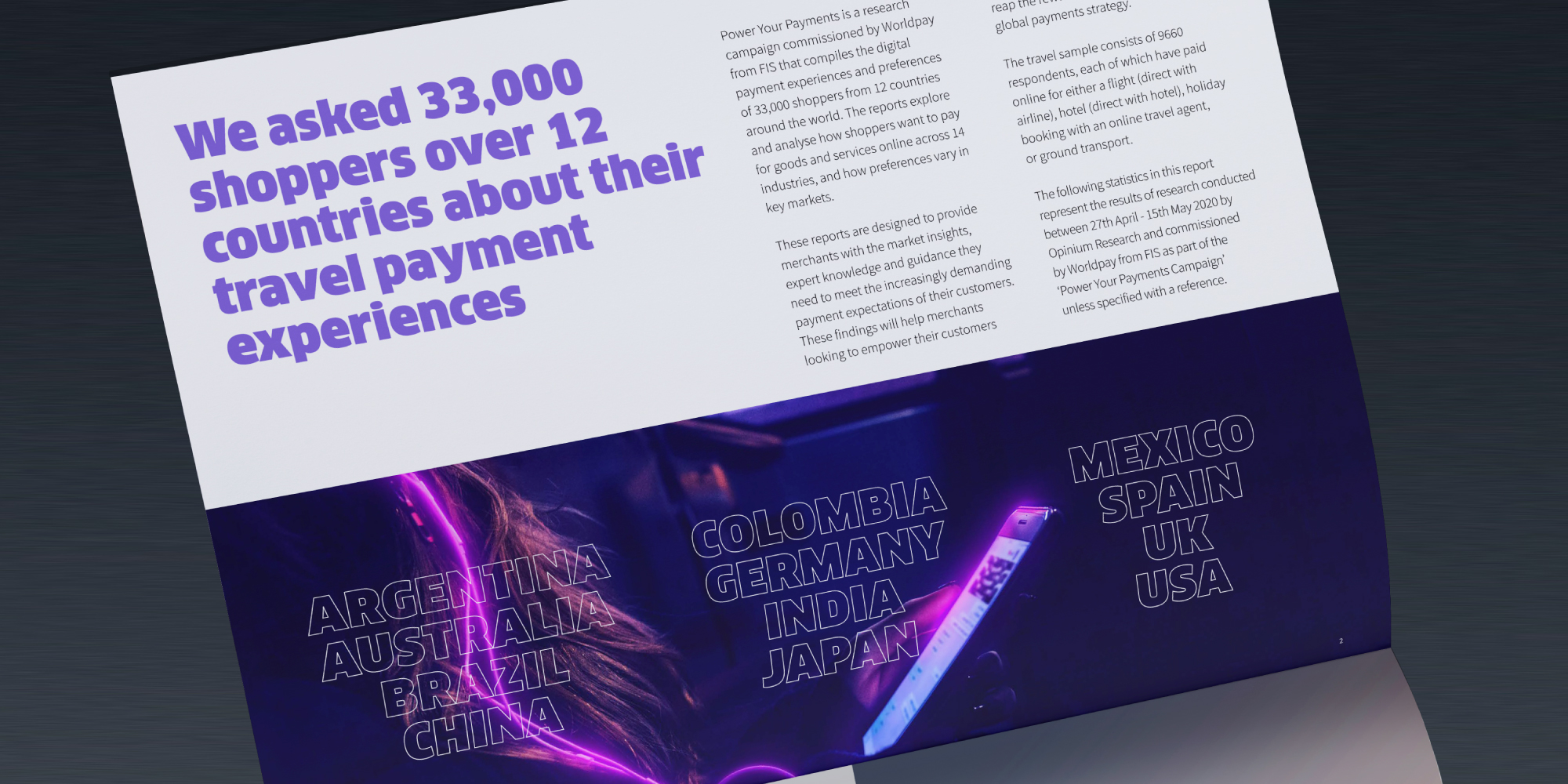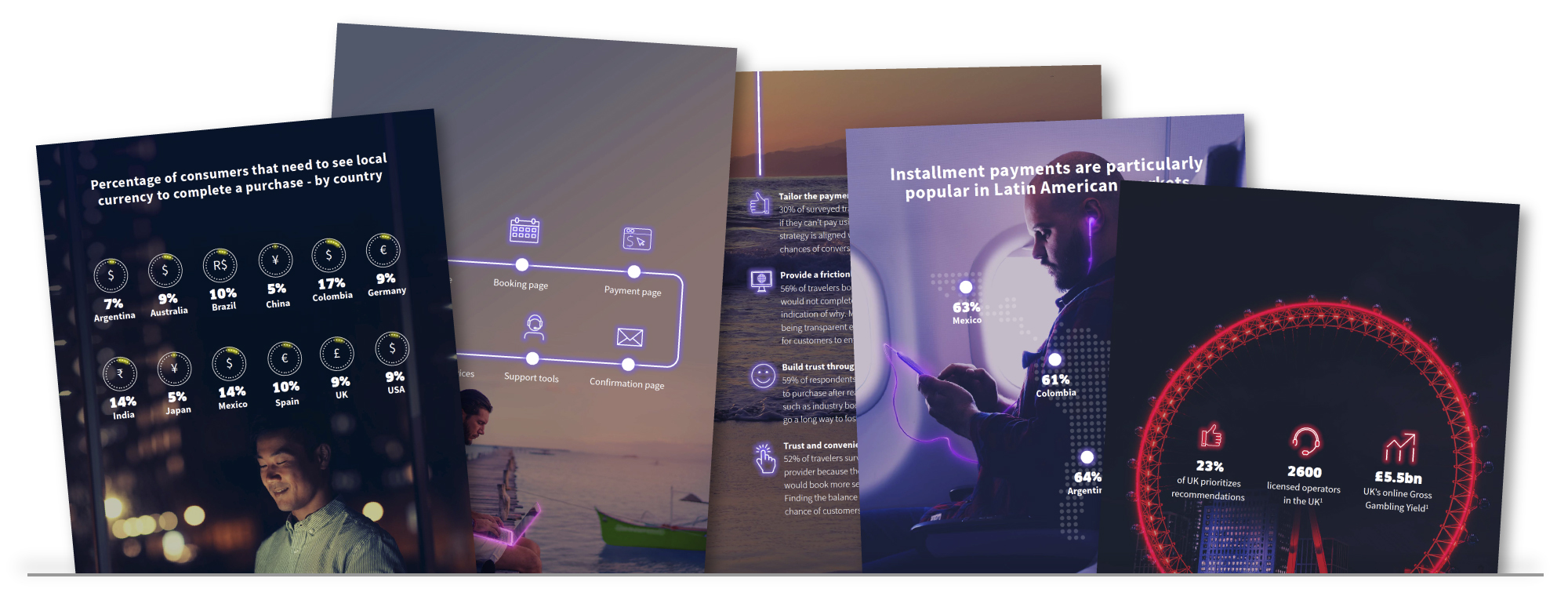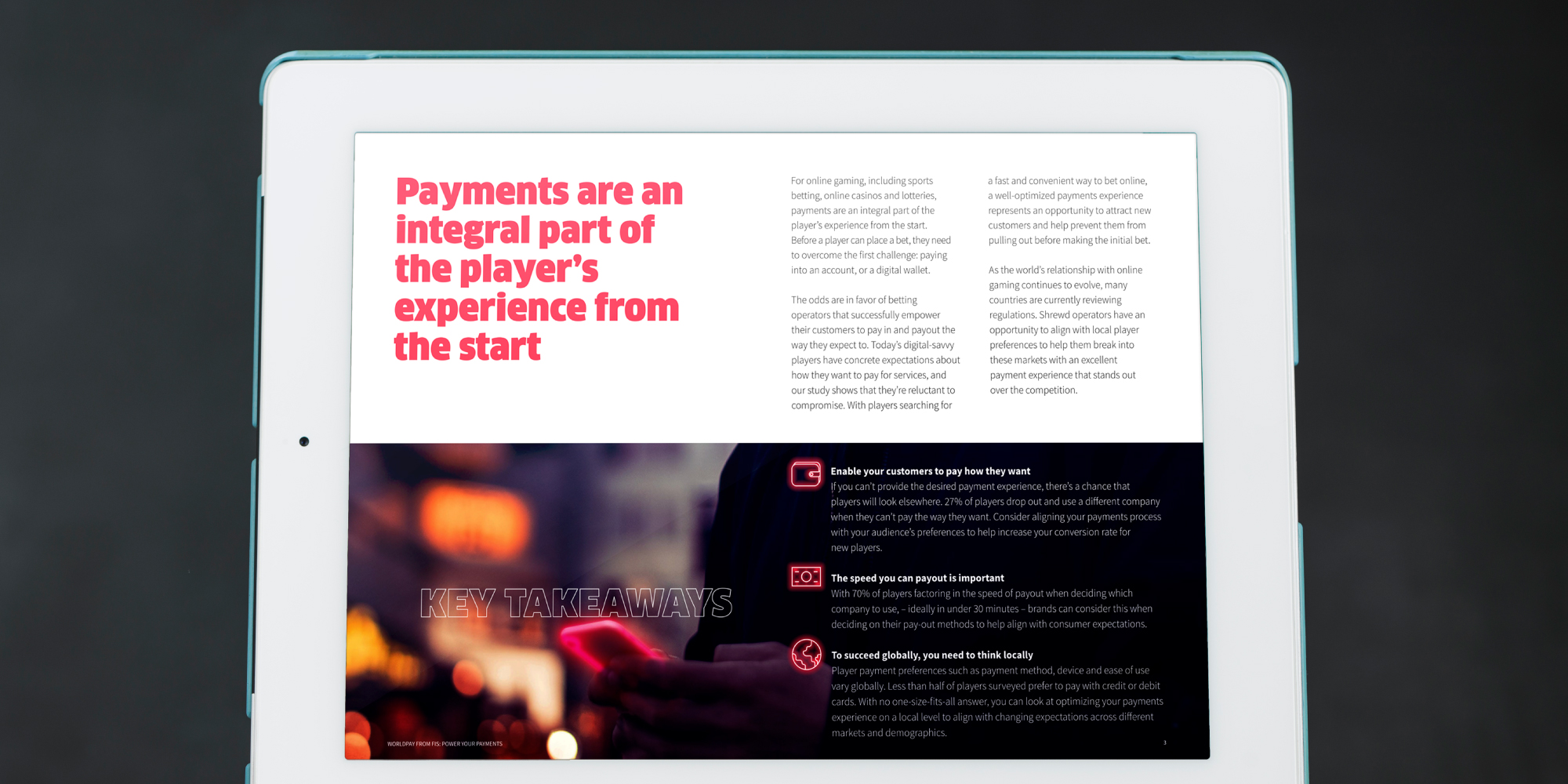We create a lot of reports for our IT and Fintech clients here at Prism, and with Worldpay from FIS’s Power Your Payments reports just launched, we thought now would be a great time to share some of our report-production prowess. Below, we highlight the steps businesses need to take to create successful industry reports that stand out, generate new opportunities, and showcase brands as thought leaders.
1. Have something valuable to say and build a compelling story that carves through the noise
Before you go all guns blazing with creative and content, it’s vital you take the time to understand what you’re trying to achieve with your report, and how it ties back to your business. We’ve found time and time again that the best success often comes from highlighting key industry challenges. By understanding your personas and successfully being able to navigate the industry or vertical you want to target, you’ll be able to paint a picture of the challenges they’re trying to overcome, as well as identify gaps that you could focus your research or insight on. Ensuring your subject matter is personal to a specific persona or industry greatly increases the relevance of the content in the report, and makes it a much more compelling read to your target audience.
Consider, for example, which of the following subject matters might be more compelling for a CTO at an online merchant that sells men’s clothes:
a. How shoppers expect to pay for fashion online – and what you can do to improve your online payment experience and reduce drop off rates
OR
b. How shoppers expect to pay for goods – and what you can do to improve your payment experience.
It’s clear that option a. is much more targeted, addressing the vertical, challenge and opportunity and making it specific to ecommerce rather than commerce in general. This is the thinking behind Power Your Payments. Rather than having just one “how shoppers want to pay online” report, Worldpay from FIS cleverly segmented it by vertical, allowing comparisons to be made between verticals, and address key trends and challenges unique to each industry.

2. Gather valuable qualitative or quantitative data that allows you to analyse the market and provide thought leadership and insight to your customers and prospects
Of course, no report is possible without first conducting an excellent research phase. However, “research” comes in many forms – it could be a high-volume quantitative analysis of thousands of people, allowing for percentage-based answers that make it easy to experience trends and local outliers that are ripe for analysis. If you’re looking to conduct a large-scale survey, reach out to research partners that have vast networks available. For smaller-scale lighter surveys, this could be achieved by working through your existing database or through an agency partner. One experienced data company we’ve worked with before recommends a minimum of 100-200 responses before qualitative trends can be analysed, so we’d advise against going any lower if you want a reliable sample.
Alternatively, a research report may be more qualitative, using a smaller sample and asking more detailed questions to gain a better understanding about the unique challenges facing each organisation surveyed. One key benefit of this approach is that it allows the reader to connect with similar challenges faced elsewhere – potentially including direct competitors – and allows the author to connect more directly with their services and how they can help solve customer challenges highlighted in the report. Another advantage of this approach is that you may be able to reach out to existing customer advocates, potentially further strengthening your relationship with them and allowing you to tie in your solution even more directly.
Ask yourself which approach would best suit the point you’re trying to make. Understand your budgets, timeline, and options available to you. For Worldpay’s Power Your Payments campaign, it was clear from the start that volume was vital. With 33,000 consumers surveyed, the results clearly highlighted payment trends across 12 markets around the world, and allowed Worldpay to pull out key headline stats that helped form the marketing for the campaign.

3. Build a unique campaign identity
Time for the fun bit! Creating a strong campaign identity that has instant impact yet still aligns with your brand ensures your report gets noticed on digital channels, and increases that all-important “click-factor”. Likewise, strong, powerful visuals make any print versions compelling to targeted users, or as giveaways at events (when things get back to normal!).
So where do you begin?
It all starts with a compelling tag line that can be tied in with the subject of the report. This could directly address the challenge or solution on the table, or be more abstract, allowing you to create visuals and a tone of voice that matches the theme of the report.
Take Power Your Payments, for example. These reports are all about how online merchants can use real consumer payment preferences to optimise their online payment experiences. The data and analysis in the report empowers merchants to be able to align their payment process with real expectations – and that’s a powerful tool to have.
With Power being the creative keyword, we quickly got to work thinking about ways this could be visualised in a way that supports the research, whilst complementing the punchy Worldpay from FIS brand. As a modern, innovative fintech organisation, we knew Worldpay would look for something energetic, contemporary and aligned with today’s design trends. As a hero element, we wanted to use neon as a way to accent strong verticalised imagery, and highlight key datapoints in the text. And, of course, light ties in nicely with the metaphor of power.
Have fun with your creative process – there’s no such thing as a bad idea in the concept stage – and work with an experienced agency to develop a sustainable campaign identity that stands out and packs a punch, yet is also flexible enough to evolve for future iterations of the report.

4. Telling a compelling story with your report
Understanding your campaign identity before getting to work on the copywriting process allows the writer to align the content flow with the overarching messaging and story. We like to start by building a list of keywords and phrases that can be peppered throughout the content – similarly to how you would build a keyword list for SEO purposes.
As a content and creative agency, we tend to receive a mix of briefs. Some are detailed storylines to follow, highlighting key datapoints and storylines that need to be addressed by linking through to the data. Other briefs are more open to interpretation or collaboration, allowing for more creative freedom (but a lengthier process). Neither are the wrong way to deliver a content writing brief, as long as the expectations are clear and there’s enough direction to pursue.
It’s important to ensure the content output is clear, engaging, and tells the story that you want to tell. One effective way to strengthen report data is to reference third party sources when appropriate to do so. Desk research is an important part of the copywriting process, and allows for anecdotal “flavour” content that helps to tell a richer story. It can be easy to focus to much on this however – ultimately the focus needs to be on your datapoints and how that can be interpreted to positive effect.

5. When designing the report, emphasise key statistics and display data clearly
The layout and design of the report is the final yet arguably most important part of the entire process. Great design is a fundamental part of user experience, and is vital to ensure content can be consumed effectively.
If you have a key point you want to make, ensure it’s blown up to a larger size. You may want to use it to introduce a section of content, give it its own call-out box, or dedicate a graphic to emphasise the point it’s making.
Likewise, think about how you display data in graphs, tables and images. Ensure it’s always clearly labelled and easy to follow, yet still compelling enough that your readers want to spend the time to take it in.
For Power Your Payments, finding the space to squeeze in every excellent statistic and storyline led to a “mini-chapter” approach. Each double page spread allows Worldpay to highlight a separate point or statistic, allowing users to read bitesize content or just consume content relevant to what they’re trying to do.

Is that it?
That’s all there is to it! If you follow these five steps, you’ll end up with a compelling report (or reports!) that allow you to come across as a thought leader, while generating new opportunities for your business. However, the report is just the tip of the iceberg. You’ll still need to invest time and budget into the creation of supporting assets and marketing channels to ensure your report gets the widest, most effective reach.
This could include:
- Promotional videos
- Internal promotion
- Social media posts – organic and paid
- Email nurture campaigns
- Paid display ads
- Paid media on third party news sites
- PR activity
- Webinars
- Sales decks
- Infographics
- And more!
Thinking of commissioning an industry report but need some help delivering the finished product? Reach out to the team at Prism Create to discuss your requirements.
Need a bit more convincing? Check out our Power Your Payments Case Study here.

